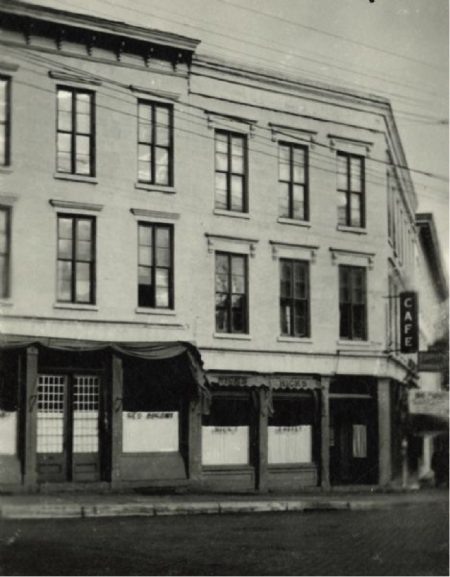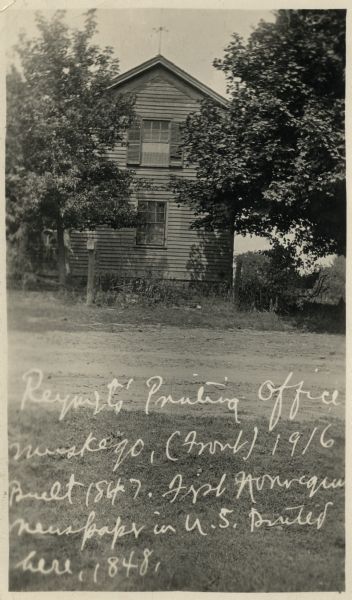
Throughout the 19th century, Wisconsin was home to dozens of foreign-language newspapers representing cultures from throughout Europe. These papers provided opportunities to create connections in America, maintain homeland networks, and keep current with news in their native language.[1] The Norwegian-language press published sixty different periodicals across the state.[2] One of the earliest, and arguably most influential, of these Norwegian newspapers was Emigranten (The Emigrant), whose office is seen above at the corner of Webster St. and King St. in Madison. Jacob Magelssen, who’s brother Kristian Magelssen immigrated to Wisconsin in 1864, worked as the Assistant Editor for Emigranten.

First published on January 23, 1852 in Inmansville, Emigranten was initially intended to be a secular, Democratic, publication. However, because it was published through a church-based organization, and due to the influence of the Norwegian Lutheran Church, Emigranten was perpetually embroiled in contemporary theological and political debates.[3] In April 1857, Emigranten moved to Madison and changed editorial hands.[4]
Although unable to remain silent on matters of faith, under the new direction of Carl Fredrik Solberg, Emigranten changed party lines, becoming a Republican press, openly endorsing Abraham Lincoln’s presidency. During the American Civil War (1861-1865), Emigranten used its large readership to recruit soldiers, particularly for the Norwegian Fifteenth Wisconsin Regiment. The newspaper reported actively on the war effort and published first-hand accounts from the front line by Norwegian American soldiers, increasing a sense of patriotic pride in the community. As the Norwegian American troops moved throughout the war, so too did copies of Emigranten, as it was passed from tent to tent and often read aloud.[5]
As Norwegians continued to move West, so too did their newspapers. In 1863, Frederick Fleischer published Fædrelandet (The Fatherland) in La Crosse, Wisconsin. Five years later, Solberg sold Emigranten to Fleischer, merging their newspapers into Fædrelandet og Emigranten (The Fatherland and the Emigrant). Publication continued until its merger with Minneapolis Tinde (Minneapolis Times) in 1893.[6]
Written by Jared Lee Schmidt.
FOOTNOTES
[1] Felecia Lucht, “Older Immigrant Languages,” in Wisconsin Talks: Linguistic Diversity in the Badger State, edited by Thomas Purnell, Eric Ramy, and Joseph Salmons (Madison: The University of Wisconsin Press. 2013), 29.
[2] Odd S. Lovoll, Norwegian Newspapers in America: Connecting Norway and the New Land (St. Paul: Minnesota Historical Society Press, 2010), 369-372.
[3] Odd S. Lovoll, The Promise Fulfilled: A Portrait of Norwegian Americans Today (Minneapolis: University of Minnesota Press, 1998), 24; Lovoll, Norwegian Newspapers in America, 34-38; Odd S. Lovoll, Across the Deep Blue Sea: The Saga of Early Norwegian Immigrants From Norway to America Through the Canadian Gateway (St. Paul: Minnesota Historical Society Press, 2015), 94-95.
[4] Lovoll, Norwegian Newspapers in America, 38.
[5] Ibid., 47-55.
[6] Ibid., 56-63, 369.